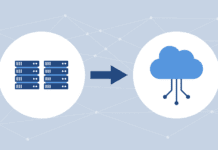The worldwide market for purpose-built backup appliances took a beating during the second quarter (Q2) of 2017.
Revenue slipped 16.2 percent on an annual basis, dropping to $728.5 million compared to $868.9 in Q2 2016. The open systems segment generated sales of $657.9 million. Mainframe backup revenue dropped 15.4 percent. In total, vendors shipped 858PB of backup storage capacity in Q2, a decline of nearly 15 percent.
IDC research manager Liz Conner noted that cloud computing, along with non-traditional approaches to data protection, are having an impact on the market.
“Following a similar trend to the enterprise storage systems market, the traditional backup market is declining as end users and vendors alike explore new technology,” said Conner in a statement. “Cloud-based backup tiers, hybrid flash arrays, emphasis on replication and data recovery, as well as software-first approaches are all driving a new wave of data protection, including purpose-built appliances.”
Enterprise storage systems vendors notched a modest 2.9 percent year-over-year gain in Q2, reaching $10.8 billion in revenue. Sales of traditional arrays fell to $5.3 billion, a 5.4 percent drop, while all-flash and hybrid-flash systems continue to pick up steam. The all-flash category generated $1.4 billion in revenue, an increase of 37.6 percent, and sales of hybrid flash arrays hit $2.1 billion.
Now home to EMC’s storage portfolio, Dell maintained its lead in backup appliances by a large but narrowing margin. The IT giant sold $404 million worth of backup systems, a decline of 64.2 percent, and held onto 55.5 percent of the market.
In the meantime, the rest of the industry’s top five all managed to grow their slices of the shrinking market.
Second-place Veritas raked in $126 .1 million, a 9.1-percent jump, and nabbed 17.3 percent of the market. IBM placed third with eight percent of the market and a 19.5-percent increase in year-on-year sales for a total of $58.6 million.
Hewlett Packard Enterprise (HPE) and Oracle were locked in a statistical tie for fourth place (a percentage point or less between them in terms of revenue share), with revenues of $34.9 and $28 million and market shares of 4.8 percent and 3.8 percent, respectively. HPE registered an 8.7 percent increase in revenue.
Oracle, meanwhile, grew the fastest. The Redwood Shores, Calif. database and business software provider posted a whopping 63.4 year-over-year backup systems sales gain.
Pedro Hernandez is a contributing editor at Enterprise Storage Forum. Follow him on Twitter @ecoINSITE.






